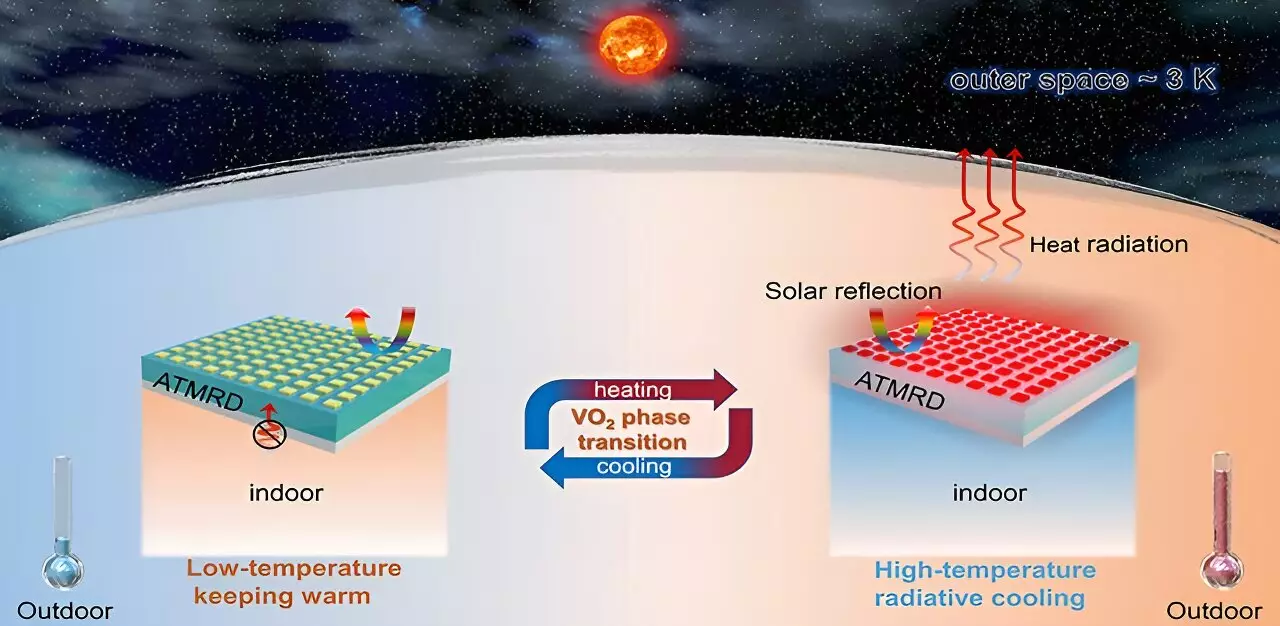With the escalating energy crisis and the undeniable impacts of climate change, the quest for sustainable energy solutions has reached a critical point. Nations across the globe are grappling with the challenge of managing their energy systems efficiently, amidst rising temperatures and increasing energy demands. Traditional energy systems are simply not equipped to handle the intricacies of modern energy consumption; thus, innovative technologies must emerge to alleviate these pressing concerns. Among these technologies, passive radiative cooling stands out as a particularly promising avenue that could revolutionize how we approach energy efficiency.
Understanding Passive Radiative Cooling
Passive radiative cooling operates on a relatively simple principle: it allows materials to cool by emitting heat directly into the vastness of space without any need for energy input. In essence, it is a mechanism that harnesses the thermodynamic properties of materials to facilitate heat loss. Optimal radiative cooling materials exhibit two fundamental properties: high solar reflectivity, which prevents heat absorption from sunlight, and high thermal emissivity, enabling effective heat emission. Currently, a range of such materials has been brought forth; however, a significant limitation remains. Most existing radiative cooling solutions possess static emissivity, leading to challenges like “overcooling.” This phenomenon arises when cooling systems remain excessively efficient at low ambient temperatures, inadvertently causing increased energy consumption by heating systems as they work harder to compensate.
Amidst the static emissivity limitations, researchers have identified thermochromic phase-change materials as ideal candidates for dynamic radiative cooling applications. Unlike their static counterparts, these materials have the remarkable ability to adjust their thermal properties in response to temperature fluctuations. Notably, recent advancements from the Beijing Institute of Technology have shed light on this innovative domain. Researchers have successfully designed a temperature-adaptive radiative cooling device that dynamically modifies its cooling capabilities according to ambient temperature changes.
This breakthrough, documented in the journal Advanced Photonics, leverages vanadium dioxide (VO2), a material renowned for its capacity to alter thermal radiation states. Through the integration of a cleverly designed metasurface composed of a periodic array of VO2 squares, this new device exemplifies a significant leap forward. By effectively balancing high thermal emissivity with decreased solar absorptance, the Temperature-Adaptive Metasurface Radiative Cooling Device (ATMRD) showcases remarkable improvements over its predecessors.
The development of ATMRD comes with quantifiable advantages. With a solar absorptance of just 27.71%—a noteworthy reduction of 7.54% when contrasted with earlier models—and an emissivity enhancement to 0.85 at high temperatures—rising by 13.3%—the efficiencies of this device are clearly evident. Furthermore, its dynamic ability to modulate emissivity surpasses prior models by 20%, positioning it as a superior option for managing temperature variations. Lead researcher Prof. Jingbo Li emphasized the significance of this technology in the context of overcooling, stating, “By integrating a temperature-adaptive metasurface with vanadium dioxide, we’ve significantly improved the efficiency of radiative cooling technologies.”
A Blueprint for Future Energy Management Systems
The implications of this research extend beyond immediate temperature management. By exploring the influence of geometric parameters within the superstructure of the device, the study reveals fundamental insights into the enhancement of thermal radiation performance. The knowledge gained through this research may be pivotal for engineers and scientists engaged in designing advanced functional devices utilizing VO2.
The potential applications of these advancements are vast. Effective thermal management solutions not only promise to reduce energy consumption but also contribute to sustainable practices that align with today’s urgent environmental goals. As societies strive to diminish carbon footprints and seek innovative energy solutions, technologies such as the ATMRD could pave the way for more effective thermal management systems, ultimately reshaping energy consumption trends and fostering a more sustainable future.
In the face of impending environmental challenges, the advancement of dynamic radiative cooling technologies represents an essential stride toward sustainable energy management. By leveraging novel materials and innovative designs, researchers are developing solutions that could mitigate energy waste, enhance efficiency, and address fundamental issues such as overcooling. As the world continues to grapple with the energy crisis and climate change, the insights offered by this pioneering research hold tremendous promise for the future of energy consumption and sustainability.


Leave a Reply